Popular types of calathea
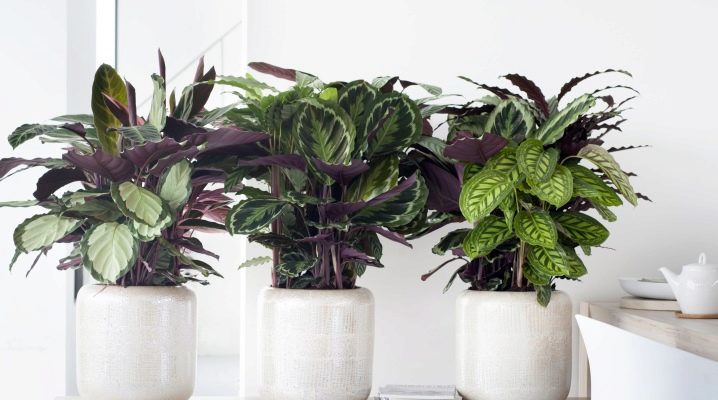
Relatively recently, a new exotic plant has appeared in flower shops in Russia, featuring unusual variegated foliage, which immediately catches your eye - this is calathea. Florists immediately fell in love with her for her excellent decorative qualities, variety of shapes and bright flowers.

Description and features
The homeland of Calathea is the humid and hot tropics of South America. This flower usually has large elliptical, oblong or ovoid leaves, in various shades of green, with edging, spots or stripes. The name "kalatea" comes from the Greek "kalathos" - "basket". The fact is that earlier the leaves of the plant were widely used in basket weaving - they are so flexible and durable.
The inflorescences of calathea are inferior in decorative qualities to its foliage. Most of them are not very large, bright yellow, orange or purple in color. Calathea is often called a prayer flower. She received this nickname, since at the base of the cuttings of each of her leaves there is a special thickening. Thanks to him, with the rising of the sun, the leaves unfold horizontally, and with the onset of dusk, they rise vertically, catching the setting rays and resembling palms raised in prayer.
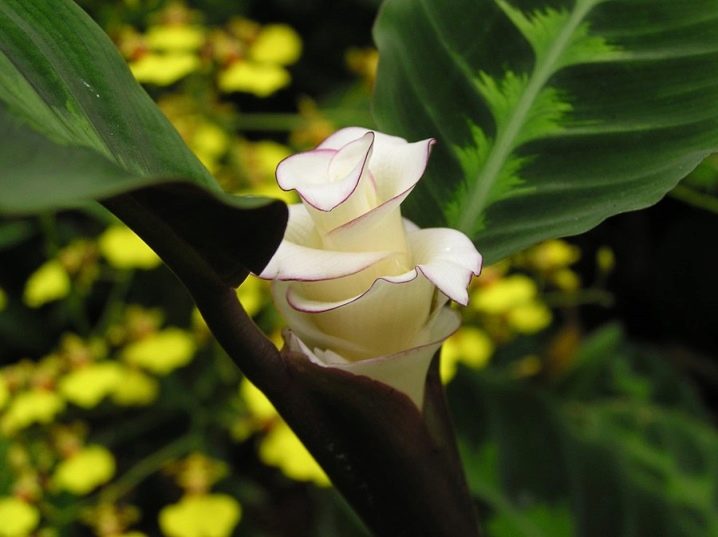
Types and varieties
In nature, there are about 130 varieties of kalata, with names, usually reflecting the features of their leaf plates or bearing the names of the scientists who first described them.
- "Sanderiana" or decorated calathea (ornata). This calathea is small in size, it is distinguished by very beautiful white and purple flowers, collected in inflorescences in the shape of an ear. The length of the corolla can be 7-9 cm.
The leaf plates are lemon-green, with light pink stripes, reaching a length of 20-22 cm.

- Rufibarba. This variety is a low, spreading bush with velvety, narrow leaves. They are slightly wavy, on the upper side of a rich emerald color, on the bottom - pinkish, covered with reddish fluff. The same fluff is found on the cuttings.
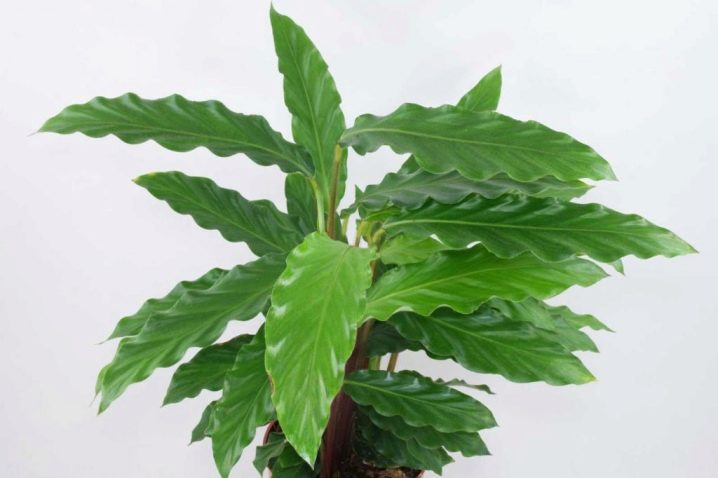
- Orbifolia. This flower has large, slightly wavy leaf plates, shaped like a fan. They are striking at first sight. The color of the leaves is deep malachite. The pattern is formed by stripes of pale green running across.
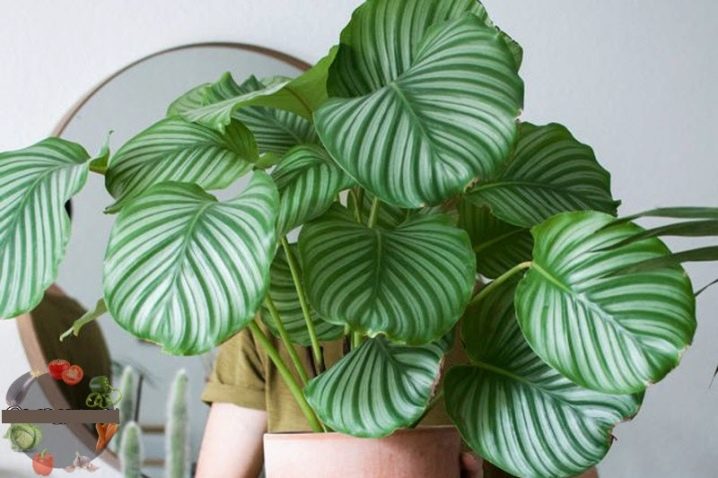
- "Makoya" (Makoyana). Quite a large variety of calathea - up to 50 cm tall. Its leaf plates are oval, glossy, variegated, the edges are decorated with a dark strip. Dark green and pink spots extend from the central vein. This variety is the most common and well-known among flower growers, and also one of the most beautiful.

- Roseopicta or medallion. The size of this variety does not exceed 40 cm. The leaf plates are oval, malachite in color, covered with lilac and silver specks, the back is bright purple.
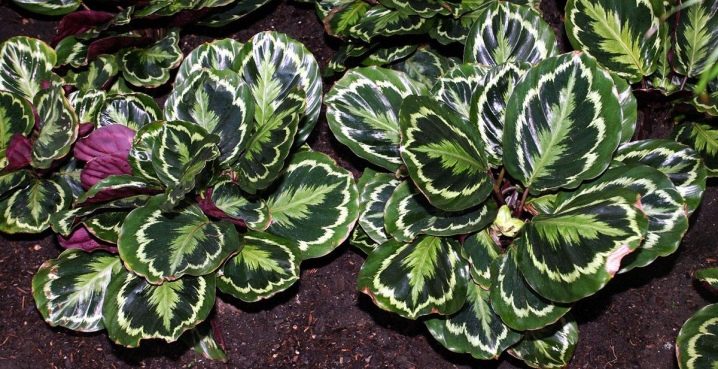
- Bahema. One of the most unpretentious varieties. The plant has rather dense, lanceolate leaves, pointed at the ends, covered with a beautiful silvery-greenish ornament. Flowers in small inflorescences, similar in appearance to spikelets.
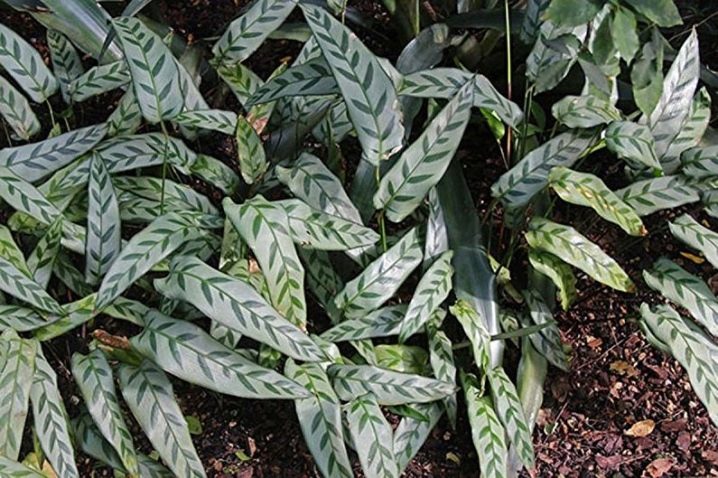
- Zebrina (striped). The leaves are very large, up to 40 cm long, velvety, elliptical. The upper side is emerald in color, the lower side is crimson. On the top of the plate, spots and stripes alternate, which form a pattern reminiscent of the color of a zebra. Flowers are collected in lilac and snow-white inflorescences.
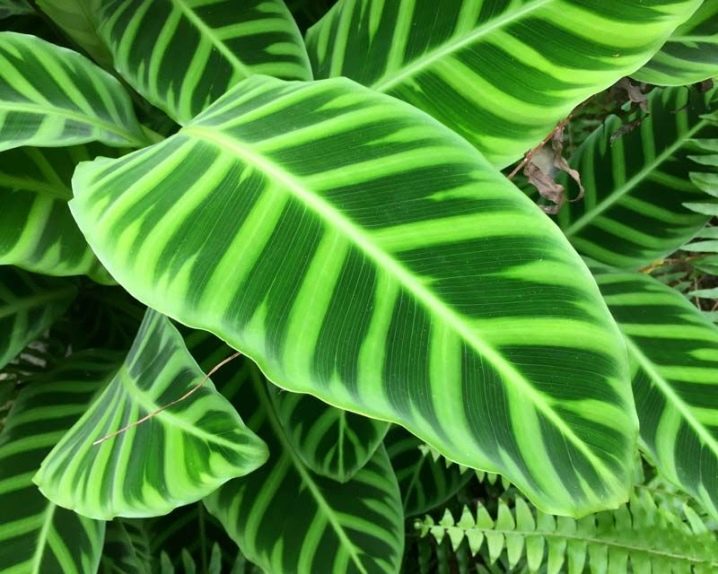
- "Mix". Not a particularly large view.The pattern of the leaves of this calathea consists of alternating dark and light green stripes, the shape of the leaves is similar to that of the Zebrina variety.
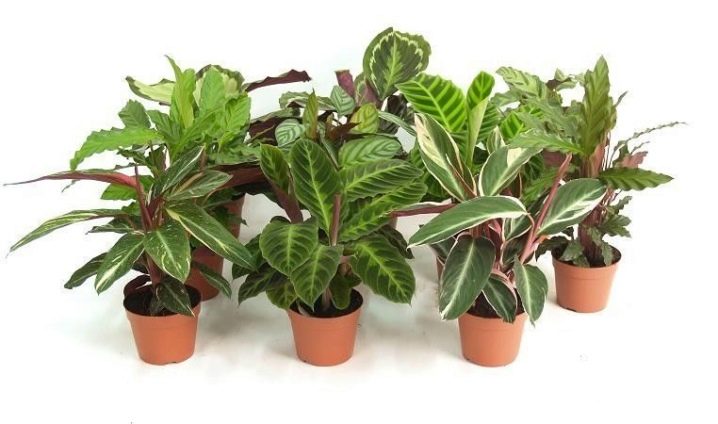
- "Lubbers". One of the tallest varieties. The leaves are semicircular, with a very variegated, asymmetrical pattern of pale yellow streaks.
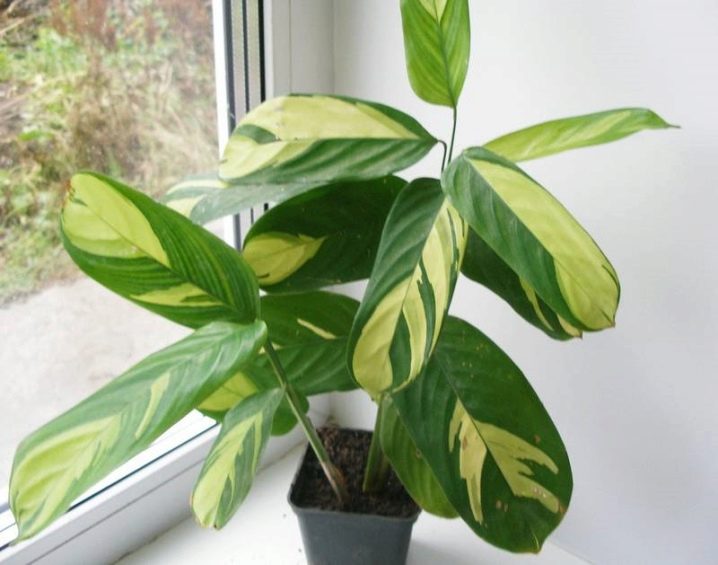
- "Silver". This calathea has small neat leaves of a light olive-silvery color, strewn with small white specks.
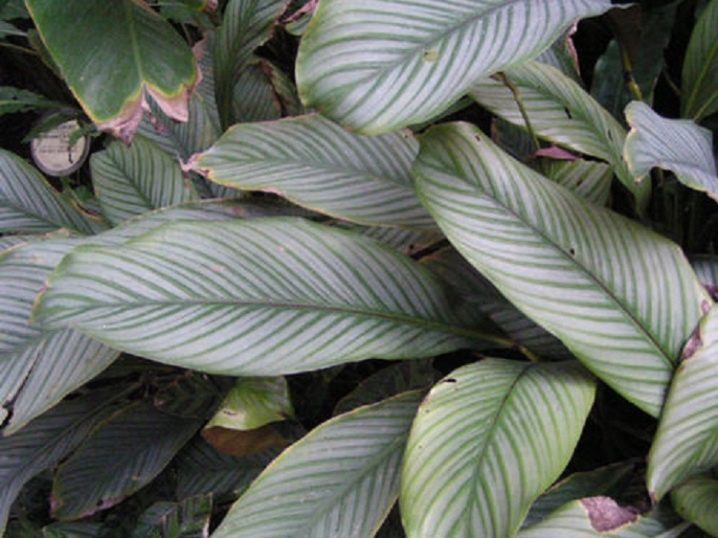
- "Network" (mosaic). This species is distinguished by fleshy leaves, heart-shaped and arrow-shaped. The pattern on the leaves is made up of white rectangles that resemble a mosaic. The leaf blade is usually light, and the veins are dark green or brown in color. One of the most demanding species in terms of keeping conditions.

- Dotty. This variety has large leaves, oval, pointed at the ends of the shape. Emerald leaf plates with a well-defined pattern - it looks like a smaller leaf is depicted on the surface of the leaf with a purple line.
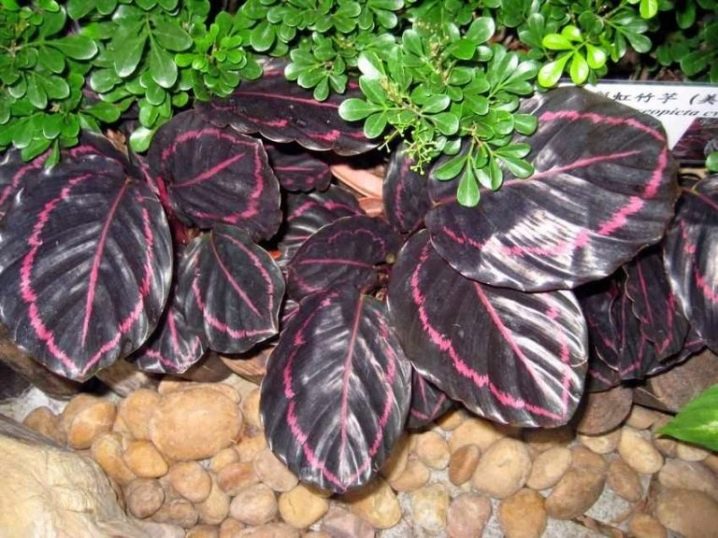
- Leopardina. A large variety with elongated narrow leaves up to 15 cm in size. The color of the leaves is light turquoise, with oblong darker stripes radiating from the center. The flowers are pale yellow, arranged in spikelet-shaped inflorescences.
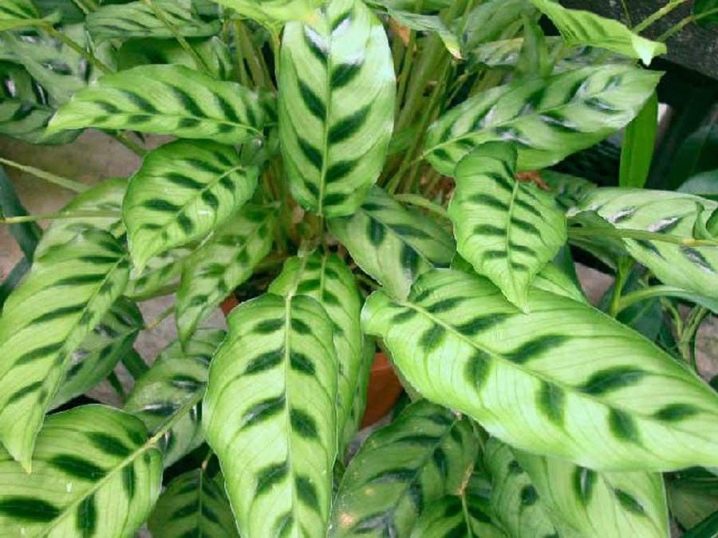
- "Litze". This calathea reaches a height of more than 60 cm. The leaf plates are small, slightly wavy, up to 15 cm long. The color is bright green, with a silvery steel tint and wide, paler stripes. On the underside of the plate is violet. The pattern is formed by parallel dark and light stripes diverging at an acute angle from the central vein.
The flowers are small, white, arranged in spikelets.
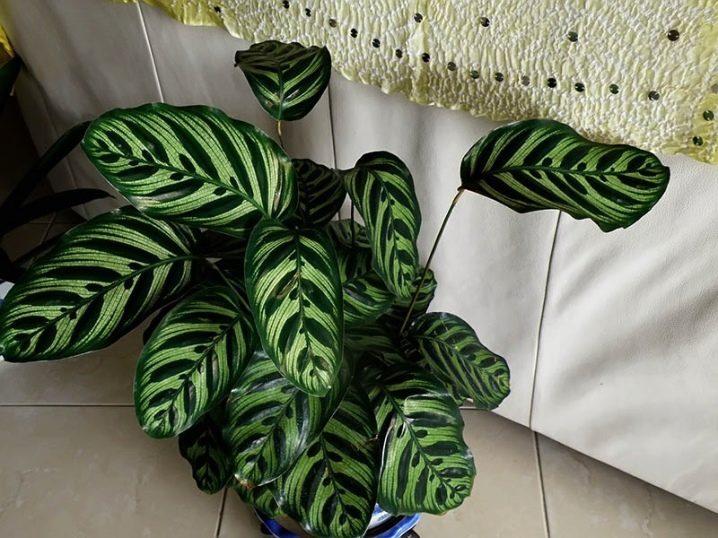
- "Painted picturata". One of the most variegated types of calathea. The leaves look like they were painted by the artist with white, yellow, pinkish and green colors. There is a dark stripe only along the edges. Some individuals have a silver leaf in the center.
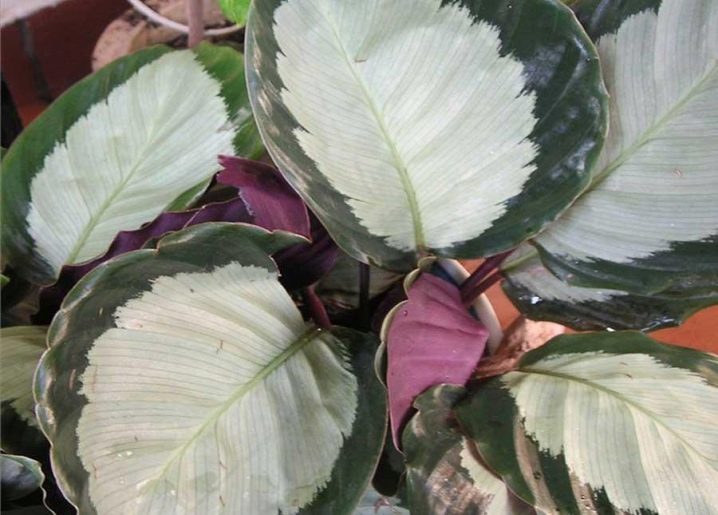
- Veitch. The largest species is up to 1 meter in height. Leaves up to 30 cm long and up to 10 cm wide, semicircular, thick, fleshy, bright green. The pattern is formed by lemon stripes, the back is crimson-shaped with yellow stripes. The flowers are white.
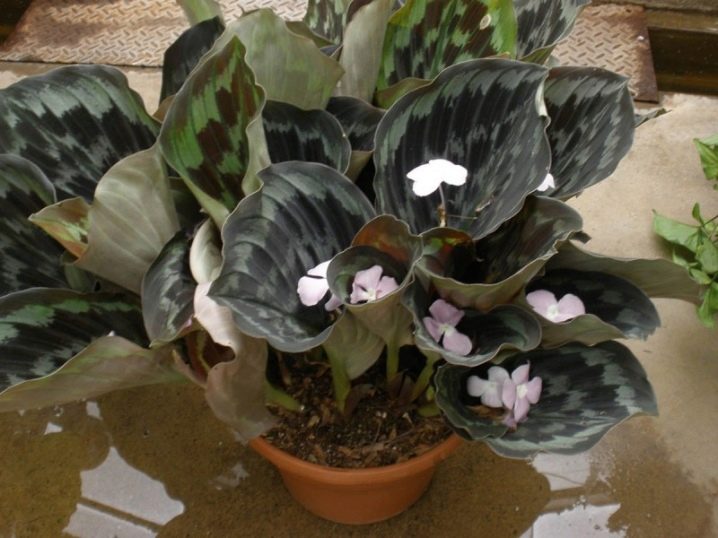
- "Triostar". The leaves of this species are long and narrow. The olive green leaf blades are patterned with parallel stripes of a paler hue. On the back side, the leaves are crimson.

- Lansifolia. This species can reach a height of 80 cm. It requires constant adherence to growing conditions - high humidity and temperature. The leaves are elongated, lanceolate, slightly wavy, malachite in color with dark spots along the vein and a dark border around the edges. The underside of the plate is crimson. The flowers are pink or bright white.
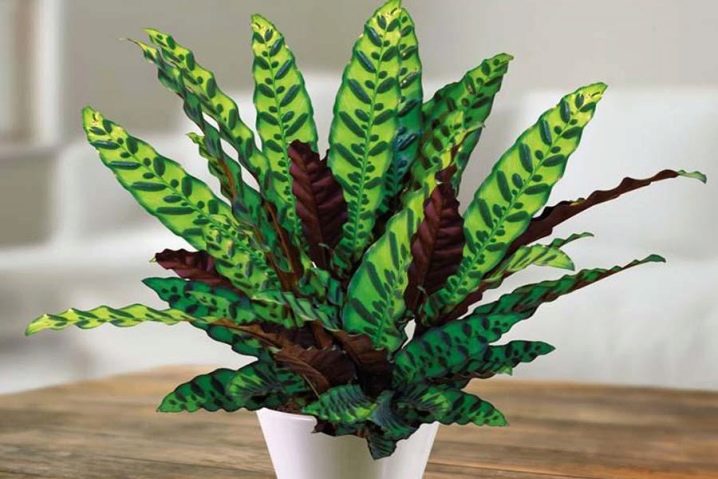
- Crocata (saffron). Orange inflorescences on bright purple peduncles. The leaves are dark, oval, slightly wavy. The underside is coffee or crimson.
The most capricious and demanding variety in maintenance, but growers still highly value it for its excellent decorative qualities.

- Majestic White Star. Leaf plates are medium in size, elliptical. The plates have a pattern of parallel bright white stripes. The texture of the leaves is slightly wavy.

- "Tasmania". One of the most attractive species for flower growers, which requires a high level of humidity. The flowers are bright orange, on straight, tall pedicels rise above small dark green velvety leaves with an interesting corrugated structure.
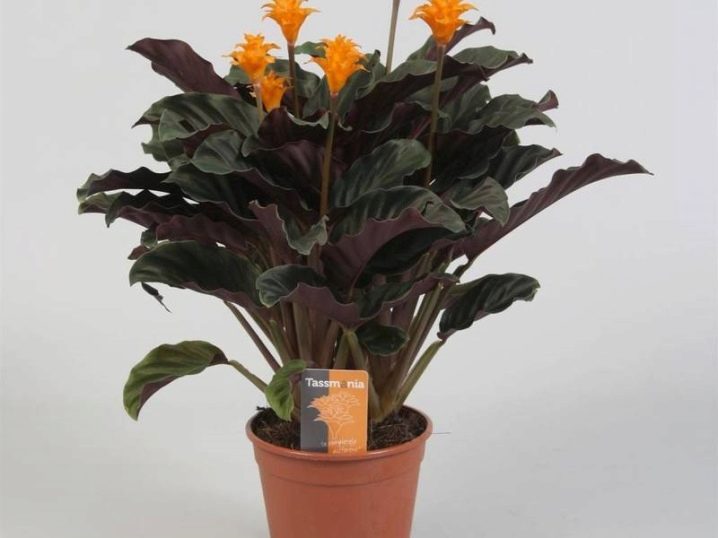
- "Varshevich"... It is a small shrub with elliptical, glossy leaves that are silky to the touch. Inflorescences are small, white.
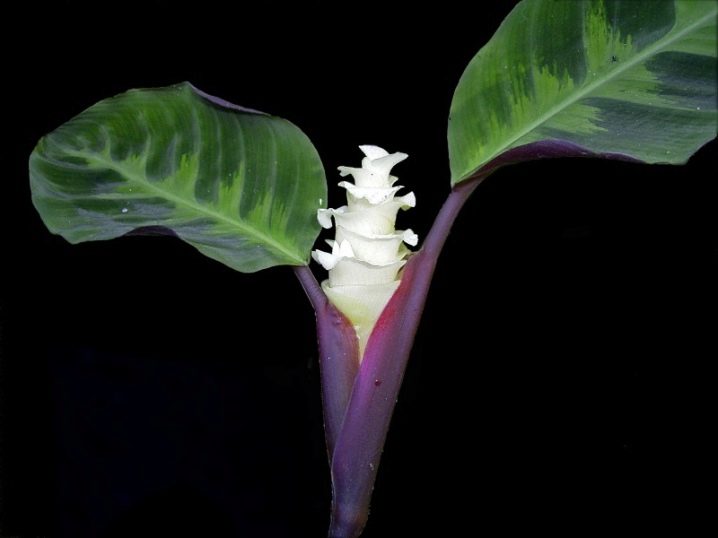
How to choose?
Almost all existing calathea species are already grown at home. Such a variety of species allows you to choose the right flower for any room and for any interior. Having decided to start such a plant, you should make sure that it is possible to provide the necessary conditions for it. Novice flower growers are advised to choose more unpretentious species that do not need to be constantly looked after, for example, decorated calathea. The most whimsical in the content of the variety of kalata with velvet leaves, but the most capricious, as well as the most beautifully flowering, is called the saffron kalatea.
When choosing a flower in a store, special attention should be paid to its leaves. They should be intact, turgid, free from damage, brown spots and not twisted.
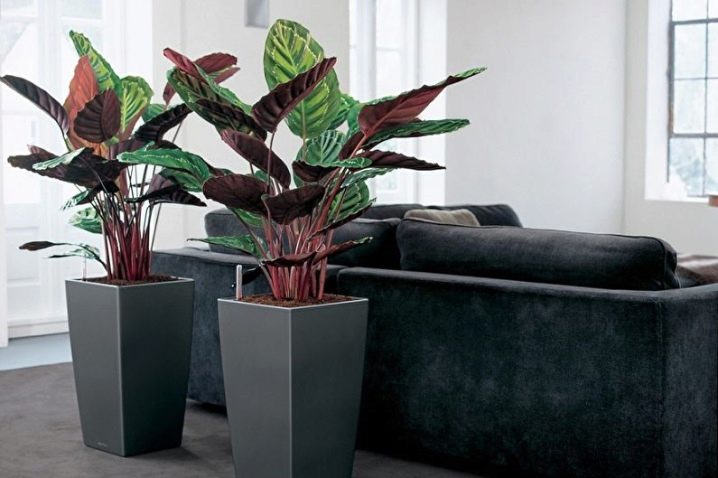
General rules for home care
Calathea is rightfully considered one of the most capricious domestic flowers. This beauty is very sensitive to many factors, including even the cleanliness of the indoor air. The flower has been observed to react negatively to tobacco odors and harsh chemical odors. The main sign that the plant is sick or does not like something is the loss of the decorative properties of the leaves. They can not only fade, but also dry at the edges, turn yellow and stop rising and falling.
- Lighting... Long daylight hours (at least 16 hours) are very important for calathea. But at the same time, it does not tolerate prolonged exposure to direct sunlight. You need to choose shaded window sills or places away from the window. With excessive illumination, the leaves curl up into tubes, turn pale and stop rising and unfolding.
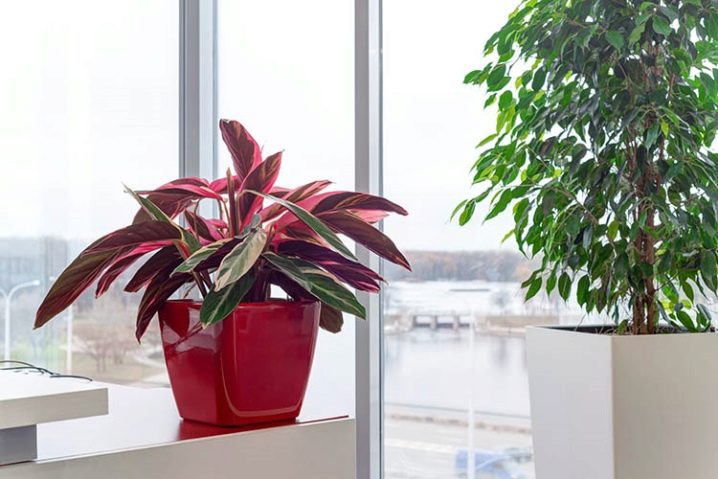
- Watering... It is necessary to moisten the flower as the soil in the pot dries out - about 2-3 times a week in the warm season and once every 10 days in winter, making sure that the soil has dried out at least 3 cm.The water must first settle, and its temperature must be higher than indoors by 3-5 degrees. To soften the water, two handfuls of peat are added to the container and left for 24 hours. This significantly reduces the content of chlorine, calcium and other chemical impurities in the water. The settled liquid is filtered, it is completely suitable for watering.

- Spraying... This way of leaving for calathea is completely unacceptable. Large drops of water leave ugly stains on the leaf plates, and with excessive light, this can cause burns. The easiest and most effective way to humidify the air in the room where the calathea is standing is to use a conventional humidifier. Sometimes they resort to a more specific method - a pot with a flower is placed in a wide pan with water, the bottom of which is lined with medium-sized pebbles and on top with a layer of sphagnum. Moisture leaves such a tray slowly, forming a special moist layer of air around the flower.
In this case, it is necessary not to allow the bottom of the container to touch the water, otherwise this can lead to excessive moisture and death of the plant.
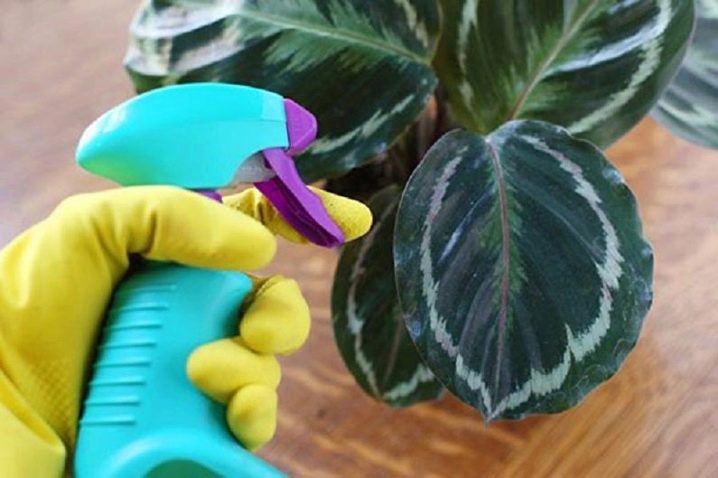
- Temperature conditions. Calathea stenobiont is a flower with a narrow zone of climatic comfort, therefore, it is necessary that where it is located, the same temperature is always maintained (from 19 to 24 degrees). Drafts, cold and sudden changes in temperature can cause plant death.
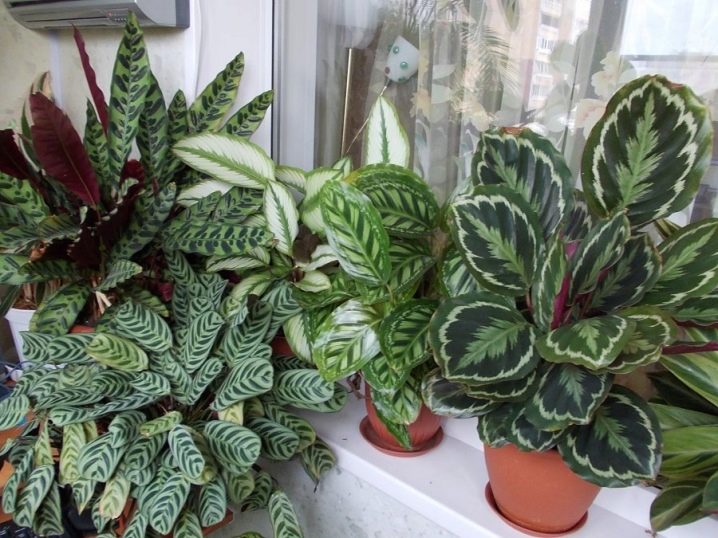
- Soil and top dressing. This flower has fibrous roots, that is, superficial and grow in width, without going deep into the soil. Therefore, the plant requires a wide and deep container with a high drainage layer. For regular transplants, it is best to use a special potting soil from a florist, to which you should definitely add coarse sand. Fertilizers are best applied in spring, during the most intensive growth of calathea, but choose exclusively liquid preparations, with a minimum level of nitrogen and a complete absence of calcium.
The soil in the pot must be changed regularly, since the roots of the flower produce special substances that lead to a change in the composition and acidification of the soil.

How to care for calathea at home - watch the video.





























The comment was sent successfully.